“If we use a drop down grab rail in the accessible toilet, the facility can double as an ambulant toilet, right?” This is a general enquiry that pops up in the office from time to time but our view is simply no, it can’t.
Most frequently this question is in relation to use of the drop down or swing away grab rail in lieu of the grab rail located at the back of the pan (in the case of an accessible toilet).
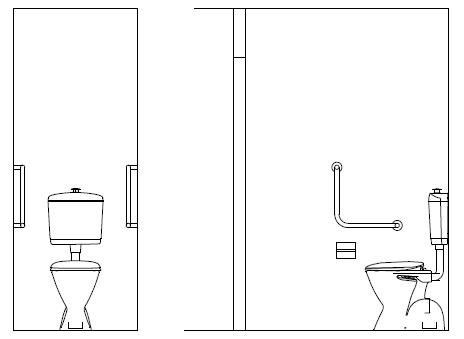
Typical ambulant toilet layout, note the handrail design.
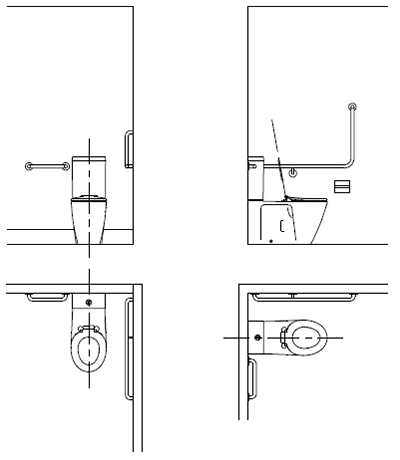
Typical Accessible Toilet Layout
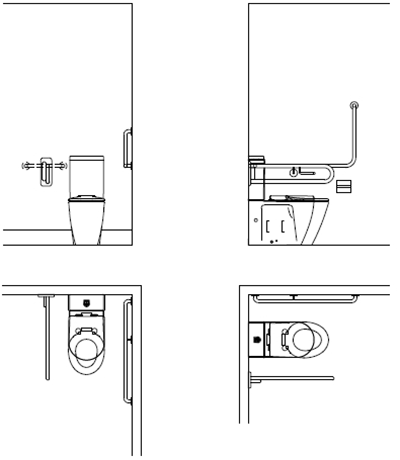
Standard Accessible Toilet Layout with Lift Up Grab Rail in Down Position, note how the short 400mm long handrail would need to be deleted
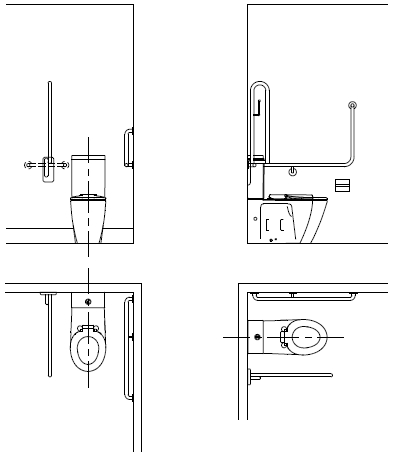
Standard Accessible Toilet Layout with Lift Up Grab Rail in Up Position. Note how it will impede someone doing a side transfer onto the pan. They no longer will have the short length of handrail to grab onto
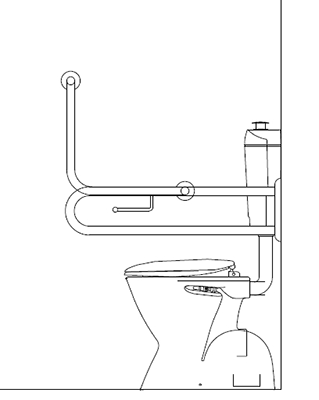
Ambulant Toilet Overlay with Lift Up Grabrail, note how this delete the oppotunity for someone with an ambulant disability to be able to grab a handrail on both sides to pull themselves up
When we consider this from a compliance perspective, drop down grab rails, whether drop down or swing away, do not in any way meet the Deemed-to-Satisfy requirements for an accessible toilet in accordance with the Australian Standards. AS1428.1 Clause 15.2.7 and Figure 42 specify grab rail locations for an accessible toilet. In accordance with these requirements, the grab rail located across the rear wall of the pan must be a minimum of 300mm in length with the outer edge of the grab rail extending a minimum of 450mm horizontally from the side of the pan. It is simply not possible for a drop down grab rail to achieve these dimensions.
When we look at the requirements for an ambulant toilet there is another factor that comes into play. AS 1428.1 Clause 16 states:
16.2 Grabrails
Grabrails shall be installed in accordance with Clause 17 and Figure 53(A).
17 GRABRAILS
Grabrails shall comply with the following:
(c) The fastenings and the materials and construction of grabrails shall be able to withstand a force of 1100 N applied at any position and in any direction without deformation or loosening or rotation of the fastenings or fittings.
A force of 1100N equates to a weight of around 112kg of force which seems reasonable. However, grab rails are only as strong as the anchors or walls to which they are attached and will only support the loads they are intended if they are firmly secured and fixings are selected to suit the type of wall. There may be specific differences between rails intended for installation on masonry walls and those intended for installation on wooden stud walls. When drop down grab rails are not appropriately fastened, they can pose a safety risk to the user. We have seen plenty of examples on site where appropriate fixings have not been provided and drop down grab rails are either loose from the wall, or hanging off the wall increasing the likelihood of falls and injuries for users.
It is also important to consider this issue from a functional perspective. Drop down grab rails become an obstruction for people in a wheelchair who side transfer on to the toilet, even when they are in the retracted position as they protrude from the wall. Consideration should also be given to the differing needs of the user groups and the functional ramifications of combining two user groups into one facility.
For those who require the use of an ambulant facility, typically users are likely to rely on the adjacent wall for support and stability when standing over the toilet or transferring onto the toilet. Where users require an accessible facility, a drop down grab rail can provide some support for a sit to stand transfer, however it’s often too low to provide stability during a standing transfer into a wheelchair.
With these factors in mind, we believe that if a Performance Solution was considered, which we would not support, the Performance Requirements would not be met as in our view, drop down grab rails do not present a solution that is equal to or better than the Deemed-to-Satisfy requirements of the BCA.